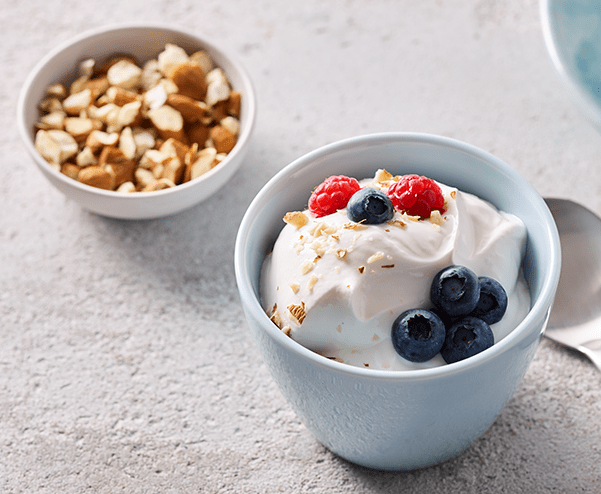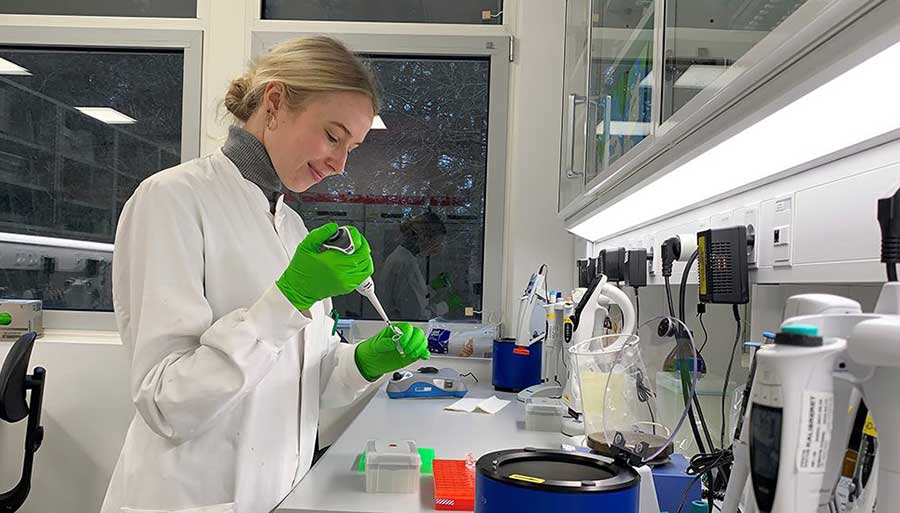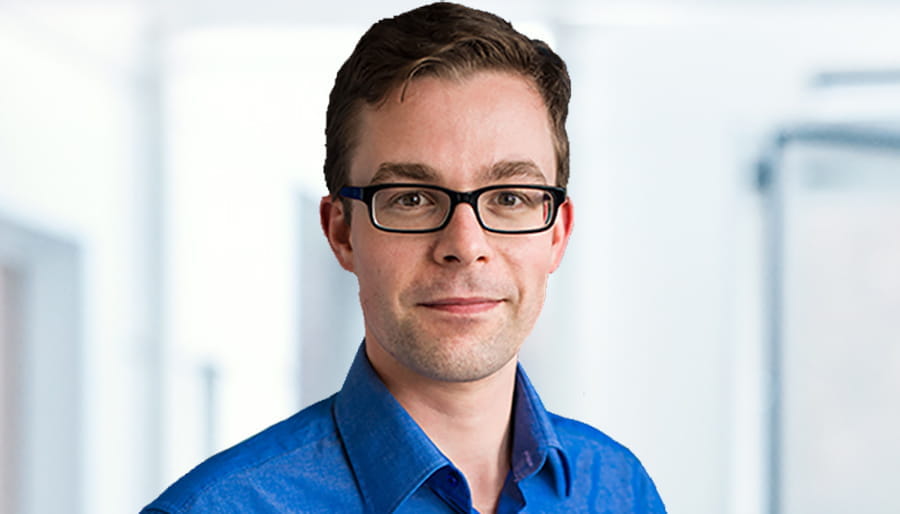Solvej Precht is a biochemist by education and joined Chr. Hansen in 2017. She previously worked with metabolic engineering of E. coli and has been a post-doctoral researcher at the Technical University of Denmark. Even though her background was in a different scientific area, she was able to transfer many of the learnings and methodologies from her past research fields to Chr. Hansen where she now works with lactic acid bacteria used to make yogurt. Recently, her research led to great scientific findings within the field of bacterial physiology, aiming for a better understanding of how good bacteria work in our products. Learn more about Solvej, her passion for science and her work on the project.
Motivated by uncovering the unknown
Bioprotection is quite under-investigated in the scientific community, and there are still many secrets to uncover when it comes to the physiology and bioprotective mechanisms of our bacterial strains. To Solvej, it is a world of opportunities: “There are unique challenges and opportunities in this field, and it motivates me to see that I am actually able to conduct top notch science and share our findings. For me as a scientist, it is extremely rewarding to contribute to the scientific community by publishing our work and presenting at scientific conferences.” (Find some of the articles on the bottom of the page).
An impactful field of research
Having proven the effects of Chr. Hansen’s bioprotective food cultures (FRESHQ®) actually helps address a global challenge. The consumption of dairy products in developed markets is a significant contributor to global food waste and losses. Therefore, extending the shelf life of dairy products without using artificial preservatives contributes to reducing food waste globally.
“It makes me proud that we are able to do high-level science with such an impact, actually working to create a better world, which is so important to Chr. Hansen. The recent bioprotection project and great results show that our hard work pays off, and that is of course very motivating for our next projects,” Solvej says.
Professional growth
Solvej’s career in Chr. Hansen began when she was hired as project leader of the bioprotection project. “I think it was a great way to start out. It was a big project in which I was able to grow and succeed in my role as a scientist and a leader,” Solvej says and adds how this project has resulted in more responsibilities in her work onwards. “It is nice to be trusted with great responsibility from the very beginning – without being completely overloaded. There was a nice balance to it, and I think that is something Chr. Hansen excels at.”
Collaboration is key
Solvej led a team of both Chr. Hansen colleagues and external collaborators on the bioprotection project. 15 Chr. Hansen colleagues from five different departments were involved, namely Experimental Systems Biology, Computational Systems Biology, Strain Development, Microbial Screening and Dairy Bioprotection Application. Alongside were external partners from the University of Copenhagen (DK), NC State University (US) and the industrial partner KeyGene N.V. (NL).
“Without the diverse team and collaboration partners it would not have been possible. With talented people with diverse backgrounds and expertise areas we applied a systems biology approach and were able to connect the dots. It was actually a very fun project, and the results were completely unexpected. We all had a common interest in sharing and exploring, and this led us to where we are now,” Solvej says about the teamwork.
“The rush of being part of such a discovery and scientific breakthrough really is something that does not happen very often,” she adds.
Working for even better products in the future
Moving forward, the project’s findings will be used continuously to improve Chr. Hansen products by identifying better strains, and Solvej and her colleagues in R&D are part of this journey: “Beside various new projects in the bioprotection area, we are currently applying the knowledge of the mechanisms behind our FRESHQ® strains for the development of even better products. There are many opportunities, and I look forward to making use of them.”
If you want to read more about the findings, methodologies and application, you can read more in the following articles from American Society for Microbiology, FEMS Yeast Research and Current Opinion in Biotechnology.





